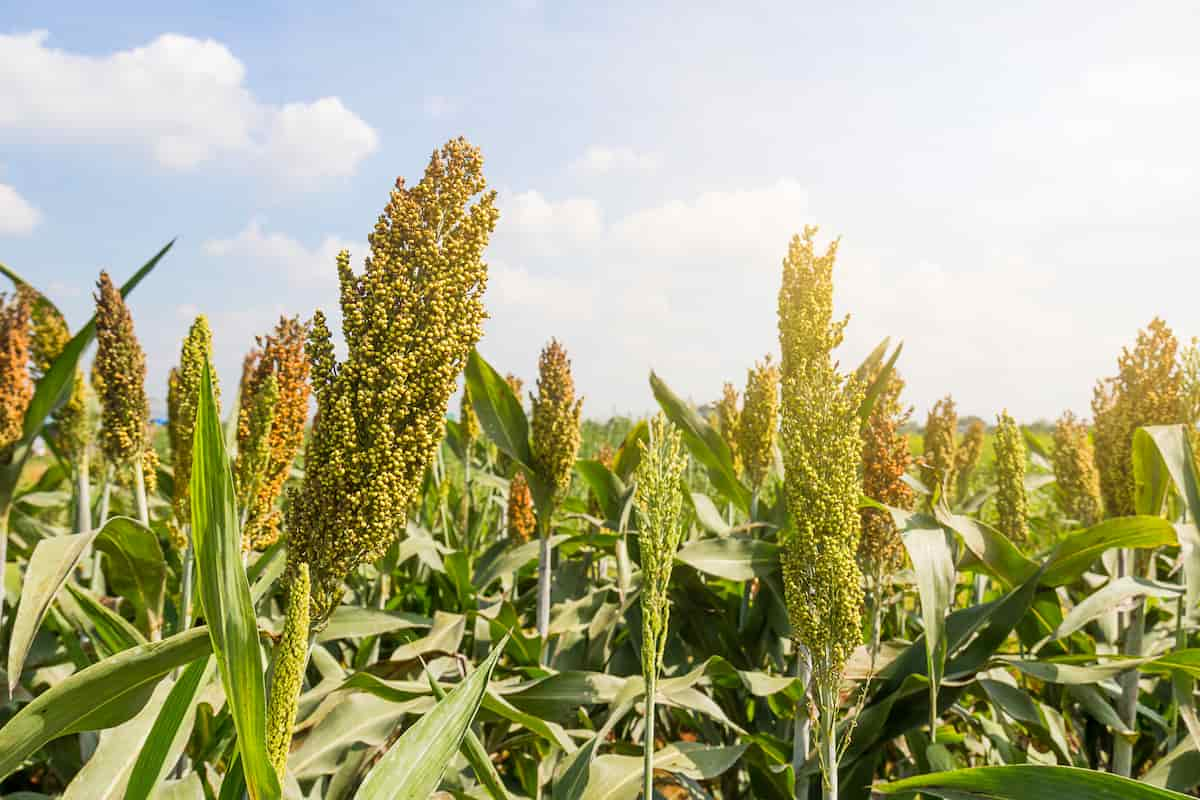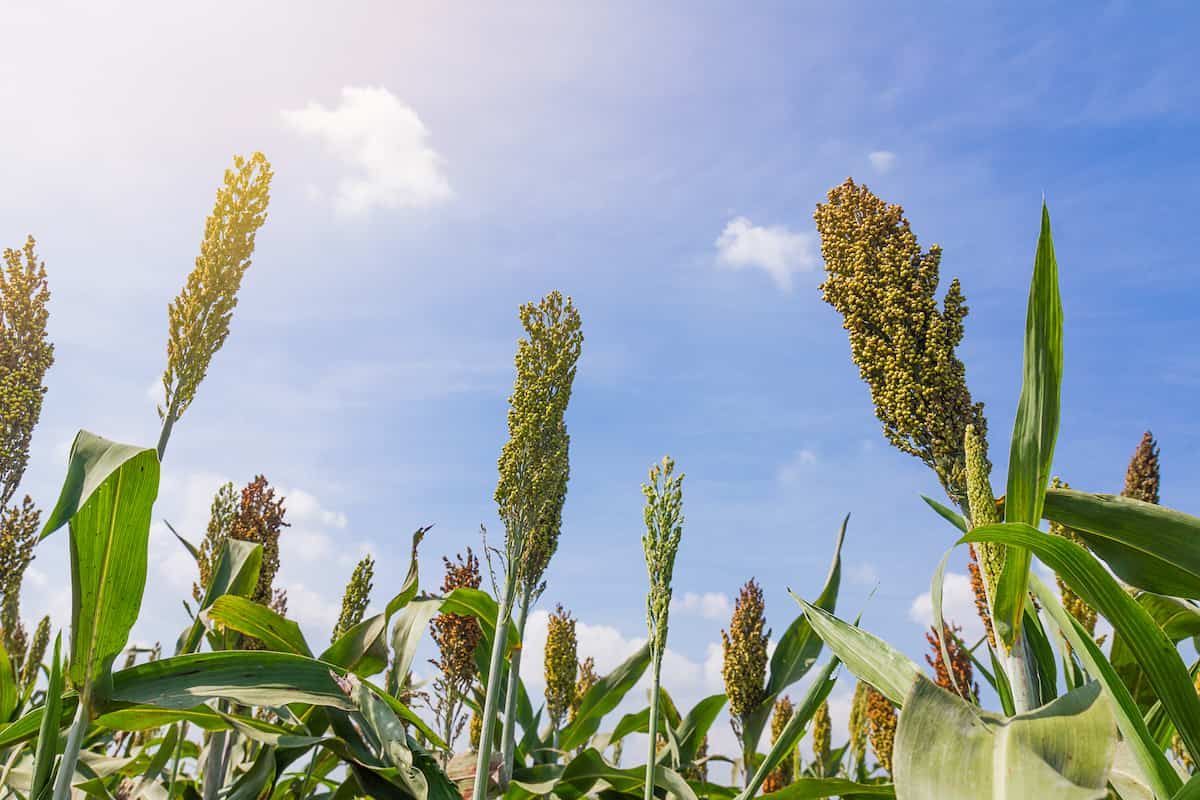Sorghum stem borer, Chilo partellus, Family Crambidae, and Order Lepidoptera, is an important pest of sorghum crops widely distributed in tropical and subtropical parts of the world. It is a major pest of millet, sorghum, and other cereals, legumes, and fodder crops in Africa and other parts of the world.

In addition to grain yield losses, the pest can also cause significant damage to the crop by introducing diseases, such as smut and rust, which can significantly reduce the quality of the crop. To effectively manage this pest, it is important to understand its life cycle, preferred habitats, and the best methods for controlling it. The sorghum stem borer will be described in detail in this blog, along with its symptoms, locations, and control methods.
Stem Borer Management in Sorghum
Life Cycle of Sorghum Stem Borer
The pest has a complex life cycle involving multiple stages and plant and insect hosts. The adult stem borer is a moth that lays its eggs on the leaves and stem of the sorghum plant. These eggs hatch into larvae within an incubation period of 2-5 days, which feed on the plant for two to three weeks. The larval phase includes seven instars. During this time, the larvae create tunnels in the stem of the plant, causing it to become weak and prone to breakage.
Once the larvae have finished feeding, they move to the ground, where they pupate in the soil within 7 to 10 days. After two to three weeks, the adult moths emerge from the soil and begin the cycle again. The life cycle is completed in 30 to 40 days. The damage caused by the stem borer can be devastating. The tunnels weaken the plant and reduce the amount of grain produced. In addition, the tunnels can be a source of infection for other plant diseases.
Occurrence of Sorghum Stem Borer
- Location of Sorghum Shootfly: The pest globally occurs in India, Pakistan, Sri Lanka, Indonesia, Iraq, Japan, Uganda, Taiwan, Sudan, Nepal, Bangladesh, and Thailand.
- Host Range: The pest can cause an infestation in Maize, Sorghum, Sugarcane, Bajra, Rice, and Finger millet.
Factors Favoring Population Increase in Sorghum Stem Borer in Field
- Climate Change –Warmer temperatures and increased rainfall favor the survival of the SSB larvae and other life cycle stages.
- Poor Pest Management Practices – These include the lack of appropriate chemical applications, inadequate use of cultural practices to reduce the population of SSB, and the lack of proper monitoring and scouting to detect the presence of SSB in the field.
- Cropping Practices – Continuous cropping of sorghum without crop rotation or intercropping can also increase the SSB population. The same crop allows the SSB to build up its population and attack the crop more severely.
- Host Plants – SSB also finds suitable host plants other than sorghum, such as maize, wheat, and millet. These host plants provide an alternate food source for the pest and can contribute to the increase in its population in sorghum crops.
- Natural Enemies – The poor management of natural enemies, such as parasitic wasps and entomopathogenic fungi, can increase the SSB population.
Identification of Sorghum Stem Borer in Sorghum Field
- Egg: Yellowish, scale-like flat oval eggs laid up to 50 in groups on the lower side of leaves closer to the midribs and on the stems.
- Larva: Yellowish brown colored, brown head and prothoracic shield.
- Adult: The moth is medium size, straw-colored. The adult male moth has a white tuft of hair near its head.
In case you missed it: Downy Mildew Disease Management in Sorghum: Symptoms, Treatment, Chemical, Biological, Natural, and Organic Control

Damage Symptoms of Sorghum Stem Borer in Sorghum Field
- Drying and Withering of the central shoot leading to the “dead heart” is the characteristic damage symptom of this pest.
- Visible boreholes near the nodes of the stem.
- As the larvae feed and grow, they create a characteristic “leaf roll” in which the leaves are rolled up around the stem.
- Red mining inside the midribs of the leaves.
- Young larvae crawl and eat on tender folded leaves, causing familiar “shot hole” symptoms in a parallel pattern.
- The parts of the stem affected by this pest show tunneling caterpillars internally.
Percentage of Yield Lose in Sorghum Due to Sorghum Stem Borer
Generally, yield losses of at least 30%, an average of up to 50%, and a maximum of up to 80%, depending on the infestation level and the attack’s timing. Before the panicles have formed, early season infestations can result in reduced head size and fewer seeds. Late-season infestations can result in lower test weight and grain quality. And, Economic Threshold Level is 10% dead hearts.
Cultural Control of Sorghum Stem Borer
- Resistant Varieties – E 302, E 303, IS 2205, ICSV 700.
- Sanitation – The stubbles should be plowed up during winter and burnt to destroy the hibernating larvae. Dead hearts should be extracted and used as fodder, or they should be interred in manure pits.
- Inter-cropping – Sowing the lab or cowpea as an intercrop to reduce the negative effects of stem borer damage, Sorghum to Lab lab /cowpea 4:1.
- Trap – Employ the light trap till midnight to attract and kill the stem borer moths, grain midge, and gearhead caterpillars.
Biological Control of Sorghum Stem Borer
- The most effective natural enemies of the stem borer are the parasitic wasps and Trichogramma spp. And Cotesia spp.
- Egg parasitoids – Trichogramma chilonis minutum
- Larval parasitoids – Bracon chinensis and Apanteles flavipes.
In case you missed it: Ergot or Sugary Management in Sorghum: Disease Symptoms, Treatment, Chemical, Biological, Natural, and Organic Control

Chemical Control of Sorghum Stem Borer
- Soil Treatment – Mix Phorate – 10 G 8 kg or carbofuran 3 G 17 kg or endosulfan 4D 25 kg with sand to make up the total quantity of 50 kg and apply in the leaf whorls.
- Spray Application – Spray endosulfan 35 EC 750 ml (or) carbaryl 50 WP 1 kg (500 L spray fluid/ha).
Preventive Measures for Control of Sorghum Stem Borer
- Timely sowing of sorghum crops, removing weeds and alternate hosts, and using yellow sticky traps for trapping.
- And monitoring of adult moths and application of neem cake or other botanical insecticides in the soil to repel the pests.
Conclusion
The best way to control sorghum stem borer pests is to practice integrated pest management strategies. These strategies involve using cultural practices, chemical control measures, good sanitation, and monitoring the pest population regularly. By implementing such strategies, farmers can reduce the losses caused by this pest and increase their yields.
- How to Prevent and Control Parasites in Goats
- Beneficial Insects in Pest Management
- Natural Solutions for Pest Control in Flower Gardens
- Types of Fungicides Used in Agriculture
- Common Issues in the Fruit Development Stage of Pomegranate Farming
- Fruit Development Issues in Papaya: Easy Solutions and Treatment
- Soil-Borne Diseases and How to Protect Your Plants
- Practices to Prevent Disease Spread in the Garden
- From Wilted to Thriving: How to Treat Root Rot Naturally in Houseplants